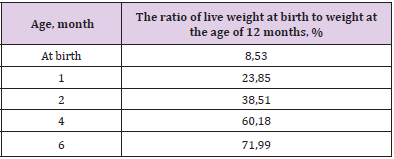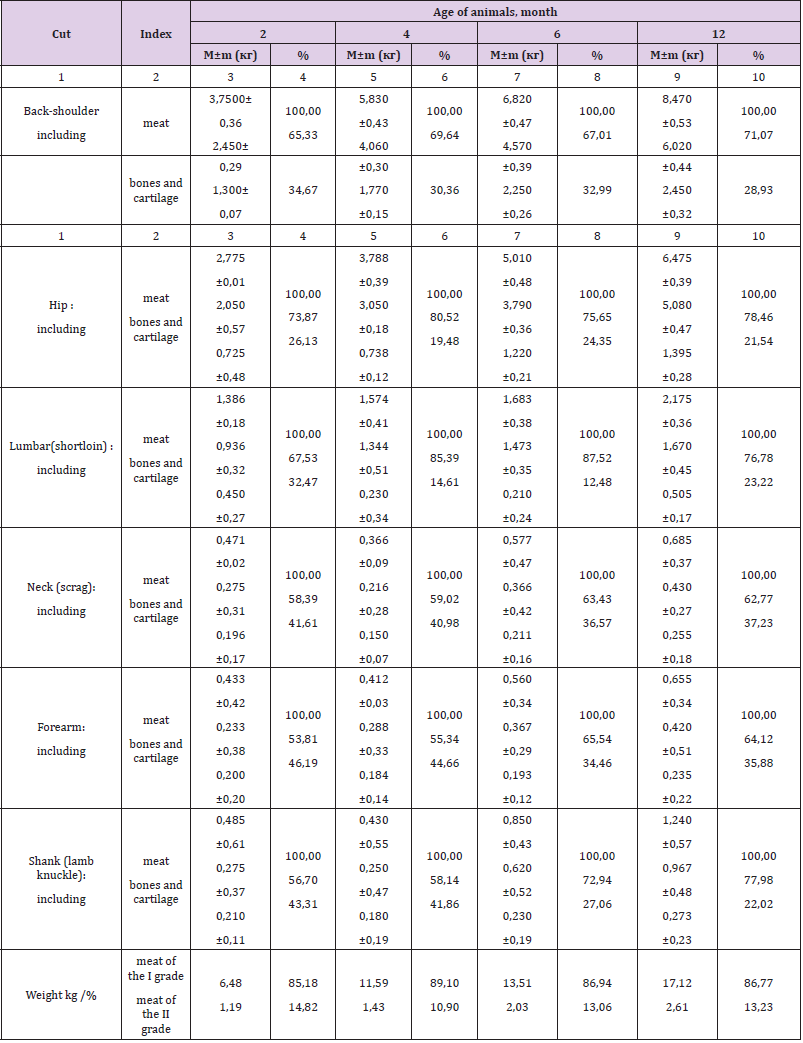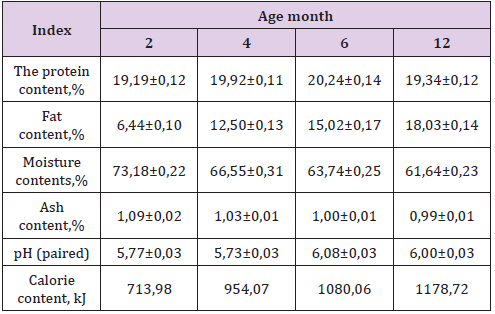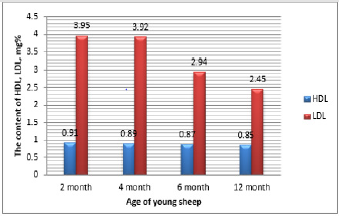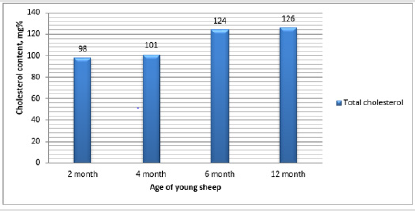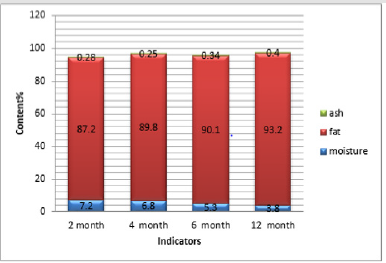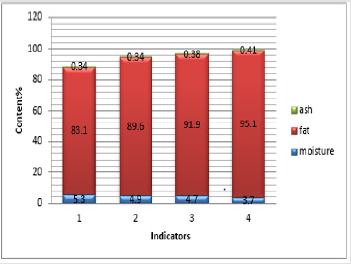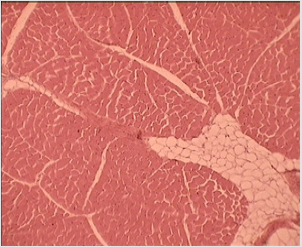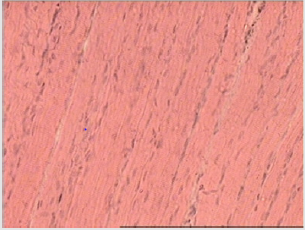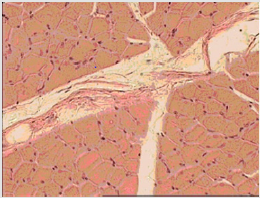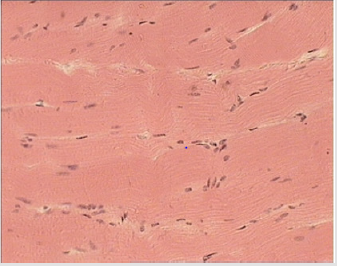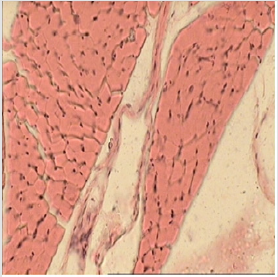Abstract
The article assesses the production method of young native sheep in the Volga region with their sale in the birth year. Scientific and industrial studies were conducted to evaluate the effectiveness of the in vivo formation of meat productivity and consumer properties of mutton from young sheep of the Bakur breed. The features of the individual animals’ development caused by hereditary patterns and environmental conditions influencing metabolic processes, which ultimately changes the individual development of animals, are revealed.
Keywords:Formation of Mutton Productivity; Sheep; Meat; Live Weight; Oxyproline; Tryptophan; Β-Lipoproteins; Toxic Elements; Chemical Composition
Introduction
According to forecasts of the World Food Organization, the
demand of the world’s population for meat will increase by
about 100 million tons, or 40%, by 2025. Perhaps, only Russia
has serious opportunities for the extensive production growth
due to natural resources (land, water, energy sources) [1]. Lamb
combines a complex set of bio- and physico-chemical properties
that determine its use in an exotrophic chain. However, in Russia
its production is not sufficiently developed in comparison with the
existing demand. Production and processing of sheep of regional
breeds in the Volga region that will help to solve a problem of raw
materials’ deficiency and to raise economic indicators of producers
can become perspective directions in expansion of raw material
base. Improving the nutritional structure of the Russian population
is largely determined by the rational use of regional raw materials
for food production [2].
One of the main tasks of state policy in the field of healthy
nutrition is the expansion of domestic production of the main
types of raw materials that meet modern quality and safety
requirements. The expected result will be the provision of 80-95%
of domestic market resources of the main types of domestic meat
raw materials and its processed products to 45-50% of the total
domestic production. Currently, lamb production is considered the
most promising and rapidly developing industry and amounts to
15 million tons per year. Young lamb is an excellent raw material
for organic products, as it contains fat with a significantly smaller
amount of stearic complex, having high sensory indicators, contains
physiologically active peptides that regulate the bioactivity of
the consumer’s body. Slaughter and processing of sheep from
regional Volga breeds can become a reserve for increasing mutton
production. A unique native coarse-haired sheep of the Bakur breed
with special zoological characteristics have been raised in the
personal sector of the right-bank regions of the Saratov province
for more than 100 years [3].
These animals are quite large, well-adapted to local climatic
and feeding conditions, and are highly valued by the local population
for their endurance, unpretentiousness and high efficiency.
They are also characterized by high early maturity and at an early
age give high-quality lamb. Due to the fact that sheep of this breed
occupy a significant place in the meat balance of the local population,
studies of the morphological features of muscle tissue growth and development as well as fat deposition for the main periods of
ontogenesis of these animals, their influence on the slaughter qualities
and nutritional value of mutton are of undoubted interest [4].
Results and Discussion
It is known that the growth of animals is a continuously
proceeding process, manifested in an increase in body weight,
through persistent formations of living matter as a result of the
prevalence of synthesis over decay. And the increase in the size of
a living organism occurs mainly due to the accumulation of protein
substances in it. The growth of the body is greatly influenced by
live weight at birth, breed characteristics, feeding conditions,
etc. The dynamics of live weight is considered one of the most
objective indicators of a qualitative assessment of meat, fattening
and biological productivity of animals. Each country has its own
standards for lamb carcasses. But in most of them, the optimal mass
of carcasses in lamb production is considered to be 15 kg. In Great
Britain and Denmark, there are special categories for young sheep
carcasses depending on their mass. According to them, slaughter of
animals with a carcass weight of less than 15.5 kg is unacceptable
(P. Hanrahan, J. Frederiksen, 1989). In Germany, on the contrary, the
demand for leaner meat of young animals is increasing [5].
The need for slaughter with a live weight of 16-18 kg is growing,
while animals with slaughter weight of 25-27 kg are in less demand.
The aim of scientific work was to evaluate the effectiveness of the
in vivo formation of meat productivity and consumer properties
of lamb of the Bakur breed produced in the Volga region. One of
the main biological features of young Bakur sheep is their ability to
grow intensively at an early age. The results of the studies showed
that the average live weight of Bakur sheep at birth is 3.9kg, to the
weaning time at the age of 4 months –27.5kg, that is, increased 7.1
times (Table 1). The average daily increase in Bakur rams up to a
month of age was 233 g; from a month to 2 months of age - 223g;
from 2 to 4 months of age - 165g. From 6 to 12 months of age, the
rams showed insignificant growths, over this period they grew at
an average rate of 71.1g.
Such a low increase in lambs can be explained by unfavorable conditions for keeping sheep in winter and, as a result, loss of live weight and fatness of sheep. Thus, the peak of growth rate of Bakur sheep is in the suckling period, especially in the first two months of life. Bakur sheep are relatively early-growing animals, as they have a high rate of gain in live weight, good responsiveness to improved feeding, especially in the first year of life (Table 2). The live weight of Bakur rams at birth in relation to the mass of one-yearold animals is 8.53%. It proves that the period of fetal growth is proceeding normally. The maturity of Bakur sheep up to 4 months of age is quite satisfactory - 60.18, but from 4 to 6 months their early maturity is somewhat reduced due to a decrease in growth rate and intensity. For a more complete picture of the growth and development of Bakur sheep, as well as the characteristics of the exterior and type of constitution, which is closely related to the productivity of the animal, along with live weight, the data of the main body measurements, measured at birth, at the age of 1, 2, 4, 6 and 12 months are given (Table 3) [6].
The growth of various body parts in all studied groups of
animals in connection with age varies with the same regularity. So,
the highest growth rate was observed from birth to weaning. By 4
months of age, the value of the main measurements relative to their
value at 12 months of age was: in height at the withers –95.3%, in
oblique length of the body - 88.7%, in chest width - 63.9%, in chest
depth - 72.2%, chest and metacarpals - respectively 80.0; 75.2%.
The value of such measurements, as the height at the withers and
sacrum, is due to the intensity of bone development in the mainly
peripheral part of the skeleton - the tubular bones of the fore and
hind limbs. Analyzing the age-related dynamics of the body, one
can note a different degree of change in individual body parts in
different periods of growth of young animals. Examples of such
body parameters as height at the withers, oblique length of the
body grow faster up to 4 months of age, while others - width, depth
and girth of the chest change intensively not only until 4 months of
age, but also in subsequent periods of development [7].
In order to objectively compare the quantitative aspects of the
meat productivity of young Bakur sheep, an experimental slaughter
of 2, 4, 6 and 12month old animals was carried out. As a result
of research, a number of patterns were revealed that reflect breed
characteristics in the level and originality of the character of meat
qualities of these animals (Table 4). Live weight is an indicator of
the precocity of animals, but it only indirectly reflects their meat
productivity. The results of the control slaughter showed that animals
at the age of 6 months produce 15.54 kg of dietary meat with
a slaughter yield of 58.99%, which convincingly confirms their high
meat qualities. The increase in the mass of the fat tail increased over
10 months from 0.85 to 3.7 kg, or 4.4 times (Table 4). It should be
noted that with age, as in sheep of other breeds, the following pattern
is observed: the proportion of cuts of the first grade is steadily
increasing, which is associated with a high rate of muscle tissue
buildup. Similarly to the varietal, the morphological composition of
the carcass is also associated with the age of the animals [8].
Assessing the meat qualities of the Bakur sheep breed of the
studied age groups, it is clear that the proportion of the meat is
increasing, and the bone is correspondingly decreasing. Carcasses
from sheep at the age of 12 months, which amounted to 83.5%,
had the largest meat yield (Table 4). As you know, an important
indicator of the meat qualities of carcasses is the meatiness index
(meat-bone ratio). In the studied animals, this indicator increased
to 12 months of age, compared with 2-month-old animals, it
increased by 1.4 times and amounted to 4.71. This is due to the fact
that the meat increase in sheep at different age periods occurs with
different intensities, therefore, feeding conditions are important. As
a result of the rapid development of the meat, the area of the loin
eye in Bakur rams increases from 10.0 cm 2 at 2 months of age to
17.8cm 2 at 12 months, which is 43.8% (Table 4). It is known that
insufficient and moderate feeding in the early stages of post-natal
ontogenesis slows down the development of animals and negatively
affects the growth, primarily of muscle and adipose tissue and, to a
lesser extent, bone growth. As a result, the yield of inedible carcass
parts increases [9].
The relative bone content at 12 months of age decreased slightly
and averaged 17.2% (Table 5). By the morphological composition of
carcasses, Bakur sheep are not inferior to sheep of other breeds, and
when slaughtered for meat, at different ages starting from 4 months
old, they produce carcasses that exceed the quality requirements
of mutton of the first category, for which the yield meat rate is 73.5
percent. The decisive factor in assessing the quality of the carcass
is the meat yield indicator. Of course, the feeding conditions have
a great influence on the change in orphological composition of
carcasses. When deboning carcasses of experimental animals, it
was found that with age, the absolute mass of all tissues in rams
increases (Table 5). So, for 2 months of the suckling period (from to 4 months of age), the ratio of meat to other tissues increased
from 76.2 to 77.7%, and bone decreased from 23.0 to 20.7%. By the
age of 6 months, the ratio between the edible and inedible parts
of the carcass has improved and amounted to 80.2 and 17.9%,
respectively [10].
The best morphological composition was carcasses from young animals of 12 months of age, the ratio of meat to other tissues reached 80.8% and 17.2%. The specialization of the Bakur sheep for predominant development of meat-and-fat qualities found the most complete reflection in the breed specificity of the ratio of the anatomical carcass parts of various nutritional values (Table 6). Carcasses of young animals are distinguished by the most favorable ratio of anatomical parts highly valuable in food and nutrition. As a result of the better development of the middle and posterior third of the trunk, the heavier hip and lumbar (shortloin) parts are obtained from these animals. The morphological composition of cuts depends on the same factors as the morphological composition of the carcass of the animal as a whole. In the carcasses of young animals, the most significant parts are the back-shoulder and hip - are developed quite proportionally, since their specific gravity is 40.0 and 27.7% at 2 months of age, 46.9 and 32.1%, respectively, at 4 x monthly, 43.9 and 32.2% at the age of 6 months, 42.9 and 32.8% at the age of 12 months [11].
The lumbar (shortloin) portion accounts for respectively: 17.8; 11.9; 10.8 and 11.0% of the mass of the carcass. The least significant parts of the carcass have a slight development: the forearm, respectively -5.3, 2.9, 3.6 and 3.3%; shank (lamb knuckle) - 4.7, 3.1, 5.7 and 6.4%; cut - 4.5, 3.1, 3.7 and 3.5%. The carcasses of 12-monthold animals are characterized by an optimal proportion of tissues of different nutritional value (Table 6). From the data of (Table 7) it can be seen that the morphological composition of cuts is closely related to the age of the animals. The content of the meat in the cuts increases with age, and the specific gravity of the bones in them decreases. So, the amount of meat in the spinal-shoulder cut from 2 to 12 months of age increases by 3 kg 570 g; in the hip (butt) at 3 kg 30 g; in a lumbar cut (shortloin) of 734 g; in the neck (scrag), forearm and shank (lamb knuckle) , the increase is negligible. Consequently, such carcass parts as the back shoulder, hip and lumbar (shortloin) are characterized by the highest meat content.
Thus, different parts of the carcass grow unevenly. In all age periods, the largest proportion in the carcass is occupied by the back-shoulder cut, hip and lumbar (shortloin). Due to this, the output of meat products of the first grade is 85.18 at the 2-month age, 89.10 at the 4-month age, 86.94 at the 6-month-old and 86.77% at 12-month-old and of the second grade is respectively - 14.82, 10.90, 13.06 and 13.23%. In view of the foregoing, it is advisable to use first-rate cuts (hip, back-shoulder, lumbar) from 12-month-old Bakur sheep for the production of dried sausages, neck, forearms, shanks for jelly products and first courses.
Nutrition value of mutton of Bakur Breed
The nutritional value of meat is determined by the content in it of biologically complete and easily digestible nutrients necessary for the human body. The content of various components in meat depends on the ratio of muscle, fat and other tissues. Meat, in which adipose tissue is interspersed with the thickness of muscle tissue, is a high-calorie product. Adipose tissue is a source of vital unsaturated fatty acids. To assess the nutritional value of lamb, as the main criterion for meat quality, the chemical composition of muscle and fat tissue of young animals from Bakur sheep, aged 2, 4, 6 and 12 months, was also studied. In addition, a chemical analysis of raw fat and tail fat was performed for all age categories. As can be seen from the data in Table 8, the chemical composition of the meat of the animals studied was characterized by a general biological pattern: with increasing age, more fat accumulated in the carcasses, and the moisture content decreased.
The moisture content in the edible parts of the carcass
decreases from 73.18% (2 months) to 61.64% (in 12 months), or
decreases by 11.5%. The protein content is quite stable, and its
deviations depending on age are negligible. The amount of fat with
age in carcasses of animals rises quite noticeably - from 6.44% at 2
months of age to 18.03% at one year old. The relationship between
fat and protein is not so explicit, but increasing fat content will
decrease protein. Currently, it is considered to be the most optimal
ratio of protein and fat in meat 1: 1. However, the Institute of
Nutrition RAMS found that the most acceptable is meat containing
no more than 10-12% fat, that is, relatively lean, protein-rich meat.
The amount of protein and especially fat in meat depends on age,
breed, gender, fatness of animals and other factors. In meat with a
low fat content, for example, in young meat, there is more protein
and moisture than in fatty meat, therefore its caloric content is less.
Animals of early meat breeds already at a young age have the ability
to early obesity.
The carcasses of such animals are characterized by a high
content of intramuscular fat, as a result of which the meat has good
palatability and high calorie content. Lamb of 4-6-month-old young
animals contains the most optimal amount of fat. The ash content
in meat varied slightly, since ash elements are found mainly in
proteins, and not in adipose tissue. Compared with other breeds,
the meat of young sheep of Bakur breed is characterized by the most optimal ratio of protein and fat. (1: 1). In accordance with the fact
that the amount of fat increases with age, the meat calorie content
also increases. The calorie content of meat was 713.98 kJ / kg at 2
months of age, and 1178.72 kJ / kg at 12 months of age (Table 8).
To characterize the quality of meat, a very important indicator is
the pH value, which allows to evaluate its properties and determine
the direction of further processing. Immediately after slaughter,
mutton of Bakur sheep has high pH values (6.81-6.55) (Figure 1),
which limits its use for the production of raw smoked and dried
sausages.
But by 24-48 hours of storage, the decrease in pH reaches
almost the minimum value (5.77-6.0) (Figure 2), because almost all
glycogen is hydrolyzed by this time to form lactic acid. The content
of tryptophan in lambs and young animals significantly exceeds
the amount of oxyproline, which is a representative of defective
proteins (Table 6). With age, in the meat of experimental animals,
an increase in the content of these amino acids is observed, but
at different rates. According to the content of tryptophan in meat,
animals of 12 months of age exceeded 2 months old by 58.54
mg%, with age the amount of oxyproline in mutton decreases
from 72.82 mg% in 2 months up to 64.07 mg% in 12 months.
As a result, in mutton there is an increase in the protein-quality
indicator from 3.81 at 2 months to 5.24 at 12 years of age, i.e. by
27.3%. Thus, according to the data of RK Taltueva (1994), the
fatty young of the Kazakh breed is characterized by the following
chemical composition of meat: moisture content - 64.0%, protein -
16.5%, fat - 18.5%, young growth of the Stavropol fine-wool breed,
respectively - 68.63, 17.25, 13.21% (ZN Fedorova, 2003), Russian
long-tailed - 74.42, 18.79, 5.80% (OV Vasenina, 2000).
The chemical composition of the meat of the Bakur coarse breed
does not differ significantly from the sheep meat of other breeds.
Modern idea of meat nutritional value is not limited by data on its
calorie content and chemical composition. Equally important is the
level of balance in the composition of meat in amino acid content of
proteins. The results of studies of the basic amino acid composition
of muscular tissue of Bakur sheep mutton of 4 ages indicate that
it has a rich balanced composition and includes 17 amino acids, of which 8 are irreplaceable. Indicators of amino acid balance of
mutton muscle tissue are presented in Tables 9 & 10. High values
of the utilitarian coefficient of amino acid composition (0.72-0.82),
approaching unity and a minimum scor (0.74-0.85) confirm that
with age, the nutritional value of mutton of young ewes increases.
An analysis of the results indicates that young Bakur sheep at the
age of 12 months has maximum meat productivity, and lamb has a
higher biological value.
With an age increase of animals in the muscular tissue of mutton of sheep of Bakur breed, there is an increase in the content of total cholesterol and a decrease in α, β-lipoproteins (Figure 2). So, total cholesterol increased from 98 mg% at 2 months of age to 126 mg% at 12 months of age, with significant differences (P <0.05). The number of α-lipoproteins from 0.91 mg% at 2 months of age decreased to 0.85 mg% at 12 months of age; the situation is similar with β-lipoproteins; they decreased from 3.95 mg% to 2.45 mg%. The differences are significant at P <0.05. This pattern is explained in relation to cholesterol by the metabolic rate in the body, and in relation to lipoproteins by impaired lipoprotein metabolism. An analysis of the research results allows us to conclude that the use of mutton from young Bakur breed can be one of the ways to obtain high-quality meat raw materials for the production of special foods (Tables 11-13). The accumulation of zinc in mutton was 4.4 mg / kg, with a maximum allowable level of 50 mg / kg; copper - 2.7mg / kg with a maximum permissible level of 20 mg / kg; lead - 0.04 mg / kg with a maximum acceptable level of 0.5 mg / kg; other toxicants were not found.
Table 13: The thickness of muscle fibers of the longest back muscle of rams of Bakur breed, microns.
The data presented in Table 9 are characteristic of previously studied ages. Therefore, the above allows us to consider lamb one of the most acceptable types of raw materials for the production of special foods. The nutritional value of adipose tissue is determined by lipids, which are a source of irreplaceable unsaturated acids (fat-soluble vitamins E) and material for the biosynthesis and construction of body fat. The results of the chemical composition of internal and tail fat (Figures 3-5). confirmed the trend: with age, the amount of moisture decreases and the amount of fat increases. With increasing age, the amount of internal fat increased by 6.0%, while the amount of moisture decreased by 3.4%. A similar trend is characteristic of the chemical composition of young animals’ tail fat: the highest fat content was observed in sheep at the age of 12 months - 95.1%, which is 12.0% higher than the similar indicators of fat of lambs of 2 months of age. Analysis of the chemical composition of the fat showed that the internal fat of sheep is characterized by a high moisture content in comparison with the tail.
An increase in the content of radicals of unsaturated and
low molecular weight fatty acids is accompanied by an increase
in the iodine number, which leads to a decrease in the melting
temperature. It has been established that the deeper the fat is,
the higher is its melting point, the closer the adipose tissue is to
the surface of the animal’s body, the greater is the iodine number.
Therefore, the iodine number and melting point can be used
to judge the origin of fat and its nutritional value. The results of
studies of qualitative indicators of internal and tail fat (Table 12)
showed that with an age increase of sheep, there is a tendency to
decrease in the melting temperature, which is explained by the
positive influence of the development of internal sheep organs. In
the internal fat, it decreased from 42.20°C to 40.63°C, and in the
tail fat, from 44.830 °C to 42.17°C from 2 to 12 months. The iodine
number of internal fat increased from 30.20 to 36.32 mg%, and in
the tail fat from 27.73 to 30.30 mg% from 2 to 12 months.
The number of saponification of internal fat varies from 192.43
at 2 months of age to 193.24 mg% - at one year old, tail - from
194.01 to 195.54 mg%, respectively. The increase in iodine number
indicates an increase in the content of radicals of unsaturated and
low molecular weight fatty acids, which reduces the melting point
of fat. The meat quality is largely determined by the histological
structure of muscle tissue of animals and depends on the size
of muscle fibers, the condition and structure of connective and
adipose tissue. The thickness of muscle fibers is considered one of
the important indicators responsible for the tenderness of meat,
and it is available for objective measurement. It was found that
the diameter of muscle fibers increases with age and live weight of
animals. The experimental results are presented in Table 13. The
obtained regularity gives reason to believe that the age-related
growth of muscle tissue and, consequently, the increase in live
weight, occurs due to the thickening of individual tissues.
The intensity of the linear increase in muscle tissue is the
highest in rams when they reach a live weight of 27.5; 32.9kg,
that is 4-6 months, then it sharply decreases. The thickness of
the muscle fiber of the longest back muscle in the Bakur sheep
at the age of 4 months with an increase in live weight from 17.6
to 27.5kg increased by 13.5 microns; from 27.5 to 32.9 kg - at 1.8
microns; from 32.9 to 45.7kg, i.e. 7.1 microns. All this suggests that
the experimental animals after they reached the age of 4 months
and a weight of 27.5 kg grew not only due to an increase in tissue
mass, but also due to the development of other tissues and, above
all, fat. Microstructural examination of the muscle tissue of the
longest back muscle of 2-month-old Bakur sheep, having a live
weight of 17.6kg, an hour after slaughter, it was established that
the muscle fibers are corrugated and lie freely in relation to each
other. Transverse striation is weakened, however, as a result of the
reduction of myofibrils in the bulk of the tissues, the severity of
longitudinal striation increases.
In the deep muscle layers, small, single nodes of an oversized
super contraction are noted. The fiber nuclei are round or oval, with
a clear chromatin structure. There were no destructive changes in
the structure of muscle tissue (Figure 6). On transverse sections,
muscle fibers have a polygonal shape, the boundaries between them
are distinctly expressed. The average diameter of muscle tissues in
bundles is 19.4 microns. The diameter of the muscle tissues ranges
from 15 to 28 microns, while small tissues up to 20 microns make
up 65.9%. Connective tissue layers lie freely in relation to bundles
of muscle fibers, wavy or sinuous, 30-100 microns thick, include
fat cells about 35 microns in size. Between the secondary bundles
of muscle fibers are layers of adipose tissue 100-180 microns thick
(Figure 7). The microstructure of the muscle tissue of the longest
back muscle of rams of Bakur breed 4 months of age with a live
weight of 27.8kg was characterized by wavy or convoluted, in some
places corrugated muscle fibers.
Figure 6: The longest back muscle of 2 months. Longitudinal section. The transverse striation of muscle fibers is weakened (G.E. * 200).
Cross striation is insignificant. The boundaries between the fibers are well defined. The nuclei of fibers are round or oval with a clear chromatin structure. Destructive changes are not detected (Figure 8). On transverse sections, the muscle fibers are polygonal in shape, the boundaries between them are clearly expressed. The connective tissue layers are loose, consisting of individual strands of bundles of collagen fibers and individual fat cells (16 applications). Between the secondary bundles of muscle fibers are layers of adipose tissue formed from fat cells with a diameter of 14±1.3 microns. The microstructure of the muscle tissue of the longest back muscle of 4 months lambs after slaughter was characterized by wavy or convoluted, sometimes corrugated muscle fibers. Cross striation is weakened, shallow. The boundaries between the fibers are well defined. The nuclei of fibers are round or oval with a clear chromatin structure. Destructive changes are not detected.
Figure 8: The longest back muscle of 4 months. Longitudinal section. The muscle tissue is wavy, sometimes with corrugated muscle fibers (G.E. * 200).
Figure 9: The longest back muscle of 4 months. Cross section. Muscular fibers of a polygonal shape, the boundaries between them are clearly expressed (G.E. * 200).
On transverse sections, the muscle fibers are polygonal in shape, the boundaries between them are clearly expressed. The diameter of the fiber’s ranges from 18 to 30 microns. The average fiber diameter is 23.7 microns, while small fibers up to 20 microns account for 52.9% of the total fiber number in the bundle. The connective tissue layers 30-170 microns thick are loose, consisting of individual strands of bundles of collagen fibers, including individual fat cells. Between the secondary bundles of muscle fibers are layers of adipose tissue 120 to 300 microns thick, formed from cells of medium size about 35 microns. A microstructural study of the muscle tissue of the longest back muscle of Bakur sheep of 6 months of age with a live weight of 33.0 kg showed that the muscle fibers had a clear border and well-defined tinctorial properties. The direction of the bundles of muscle fibers is slightly wavy. Cross striation expressed well. The nuclei of myofibrils have a thickened, fusiform shape and fuzzy borders (Figures 9&10).
On transverse sections, muscle fibers have a slightly sinuous shape. In individual fibers, more or less extended sections with the presence of longitudinal striation are detected, indicating the presence of contraction zones. The layers of endomysium are very thin and tender, composed mainly of cellular elements. The functional state of muscle tissue in this muscle is of the same type. Connective tissue layers are located freely in relation to bundles of muscle fibers, between which there is fatty tissue with a certain amount of fatty deposits (Figure 11). A histological examination of the structure of muscle tissue of the longest back muscle of Bakur rams of 12 months of age with a live weight of 45.8 kg revealed that the muscle fibers are predominantly stiff. The boundaries of the fibers are clearly identified due to their loose fit to each other. The degree of contraction of sarcomeres in the fibers varies. There are fibers with a shallow transverse striation, up to its absence, which indicates their reduced state, in the latter case, their longitudinal striation, formed by individual myofibrils, is expressed.
Figure 11: The longest back muscle of 6 months. Cross section. Muscle fibers have a slightly sinuous shape (G.E. * 200).
The nuclei of muscle fibers are located directly under the sarcolemma and have an elongated, often oval, shape with a welldefined chromatin structure of a granular-blocky appearance. Destructive changes are presented in the form of microcracks, while the sarcolemma remains intact (Figure 12). On transverse sections, muscle fibers have a polygonal shape. The average fiber diameter is 45.8±1.2 microns. Between bundles of muscle fibers are poorly developed layers of connective tissue - thinner - endomysium and thicker perimizium (Figure 13). The nuclei of cellular elements of connective tissue are also detected. Between the bundles of muscle fibers and inside them are well-developed layers of adipose tissue formed by fat cells (Figure 14). The conducted studies allow us to conclude that, on the whole, the dynamics of changes in the structure of muscle tissue of the longest back muscle of Bakur breed rams has some features. The location of myofibrils in this muscle is rectilinearly wave-like. In the longest back muscle, a high rate of fat deposits is noted.
Figure 12: The longest back muscle of 12 months. The shape of the nuclei of muscle fibers is oval (G.E. * 200).
Figure 13: The longest back muscle of months. Dense bundles of connective tissue (van Gieson * 200).
Figure 14: The longest back muscle of 12 months. Large fat cells between the fibers * Sudan black “B” * 200).
Drops of fat appear in young animals at the age of 4 months with a live weight of 27.5kg. The transverse striation of muscle tissue for all values of age and live weight of the studied animals is expressed rather weakly. The volume of development of connective tissue in Bakur sheep of 4 months of age with a live weight of 27.5kg is insignificant. Based on the above facts, the muscle tissue of the longest back muscle has a high commercial quality due to the thinnest muscle fibers with small impregnations of fat and is considered the most tender.
Conclusion
The research results showed that the average live weight of
Bakur sheep at birth is 3.9 kg, by the time of weaning from mothers
at the age of 4 months –27.5kg, that is, increased 7.1 times. The
average daily increase to a month old was 233g; from a month to a
2-month-old - 223g; from 2 to 4 months of age 165g. The formation
features of lamb quality of Bakur sheep depending on age were
established: the greatest slaughter yield - 58.99% were sheep at
the age of 6 months; the mass of the fat tail in 10 months increased
by 4.4 times; the meat index increased 1.4 times; an increase in the
area of loin eye was 43.8%; CС increased from 3.81 to 5.24 from
2 to 12 months of age, i.e. by 27.3%. With age, the output of the
first grade cuts increased from 77.68% to 89.0%, the meat content
from 75.6% to 83.5% from 2 to 12 months of age, which confirms
the advisability of using first-class cuts (hip , back-shoulder, lumbar
(shortloin)) from sheep of 12 months of age for the production of
dried sausages and neck (scrag), forearms, shank (lamb knuckle) -
for jelly products and first courses.
A study of the chemical composition found that with age (from
2 to 12 months), the moisture content decreases by 11.54%; the
amount of fat increases - from 6.44 to 18.03%, the protein content
is quite stable, and its deviations are insignificant depending on
age. The calorie content of meat increases from 713.98kJ/kg to
1178.72kJ/kg. With an increase of sheep age, there is a tendency to a decrease of fat melting temperature in the internal from
42.20°C to 40.63°C and in the tail, from 44.830°C to 42.17°C from
2 to 12 months, due to the positive influence of internal organs
development. The increase in the iodine number of internal fat
from 30.20 to 36.32 in mg% and tail from 27.73 to 30.30 mg%
indicates an increase in the content of radicals of unsaturated
and low molecular weight fatty acids, which reduces the melting
point of fat. It is necessary to use Bakur sheep more widely in the
production of young lamb. For the purpose of its rational use in 4-6
months, it is recommended to slaughter rams for meat. The studies
were carried out with a grant from the Russian Science Foundation
19-76-10013 “Development and implementation of the technology
for production and storage of environmentally friendly mutton
enriched with essential trace elements”.
References
- (2018) The project "Fundamentals of the state policy of the Russian Federation in the field of healthy nutrition for the period up to 2020".
- Lisitsyn AB (2009) The meat industry of Russia and the prospects for its development. / A.B. Lisitsyn, academician of RAAS, doctor of technical sciences, professor, etc. // All about meat pp. 5-9.
- Kalashnikov AP, Fisinin VI, Scheglov VV, Kleimenov NI (2003) Norms and rations for feeding farm animals. Directory. 3rd edn revised and expanded. M, Russian Agricultural Academy pp. 456.
- Gorlov IF, AA Mosolov, YuA Yuldashbaev (2018) Magazine "Sheep, goats, woolly business" p. 38-40.
- Gorlov IF (2005) New in the production of foods of high biological value. Storage and processing of agricultural raw materials 3: 57-58.
- Belik SN, Gorlov IF, Slozhenkina MI, Zlobina EY, Pavlenko AS (2015). Morpho-functional state of the liver of the rats fed the rations with meat of the pigs grown with antimicrobials. Pakistan Veterinary Journal 35(3): 325-328.
- Gorlov IF (2010) Creation of systemic technologies for livestock production. Bulletin of beef cattle breeding 1(63): 9-15.
- Gyro TM, Gorlov IF, Sharova MV, Randelin DA (2012) Innovative approaches to enriching raw meat with organic iodine. Fleischwirdshaft Russia 1: 66-68.
- Gorlov IF, Mosolova NI, Zlobina E Yu, Korotkova AA, Prom NA (2014) Use of new supplement feeds based on organic iodine in rations of lactating cows. American-Eurasian Journal of Agricultural and Environmental Sciences 14(5): 401-406.
- Johnson RA, Bhattacharyya GK (2010) Statistics Principles and methods, 6th USA: John Wiley & Sons, Inc pp. 706.
- (2013) Technical regulations of the Customs Union "On the safety of meat and meat products".
- Gyro TM, Khvylya SI (2015) Assessment of the quality and safety of meat and meat products using microstructural methods. FSBEI HPE “Saratov State Agrarian University”. Saratov pp. 239.

 Research Article
Research Article
